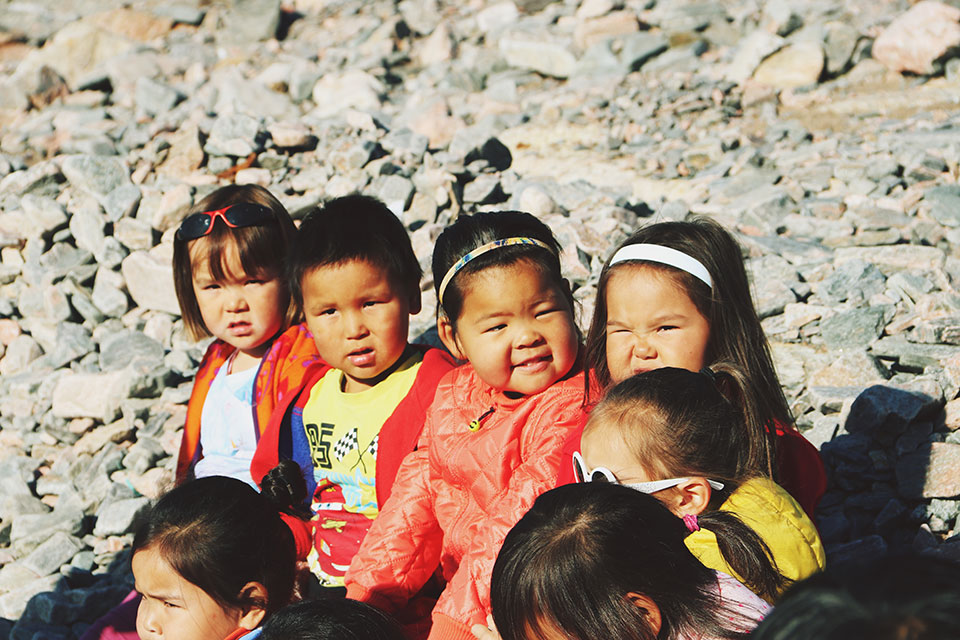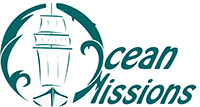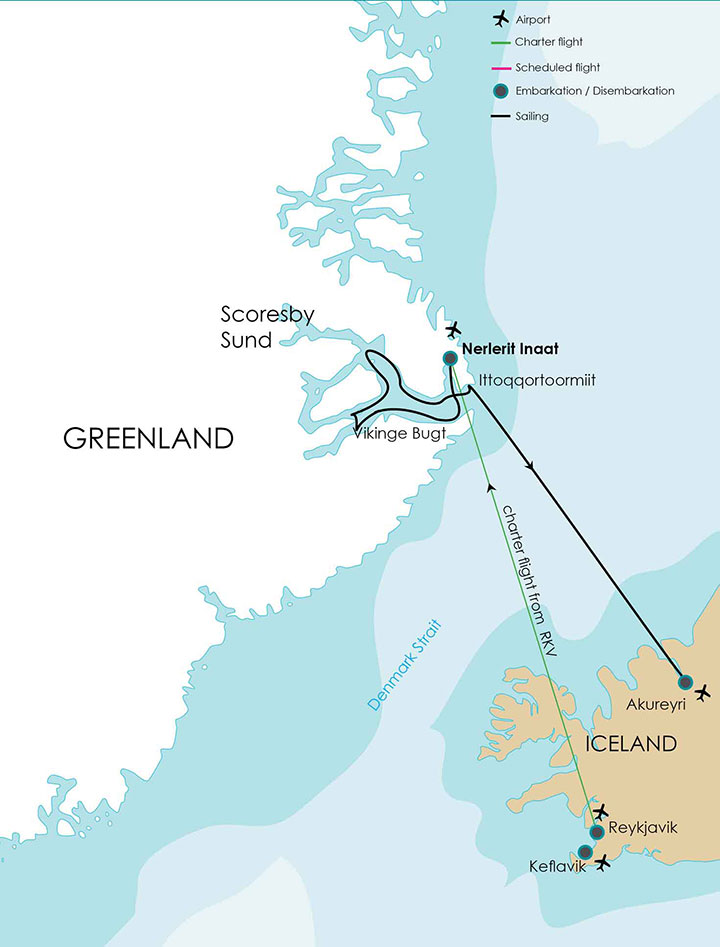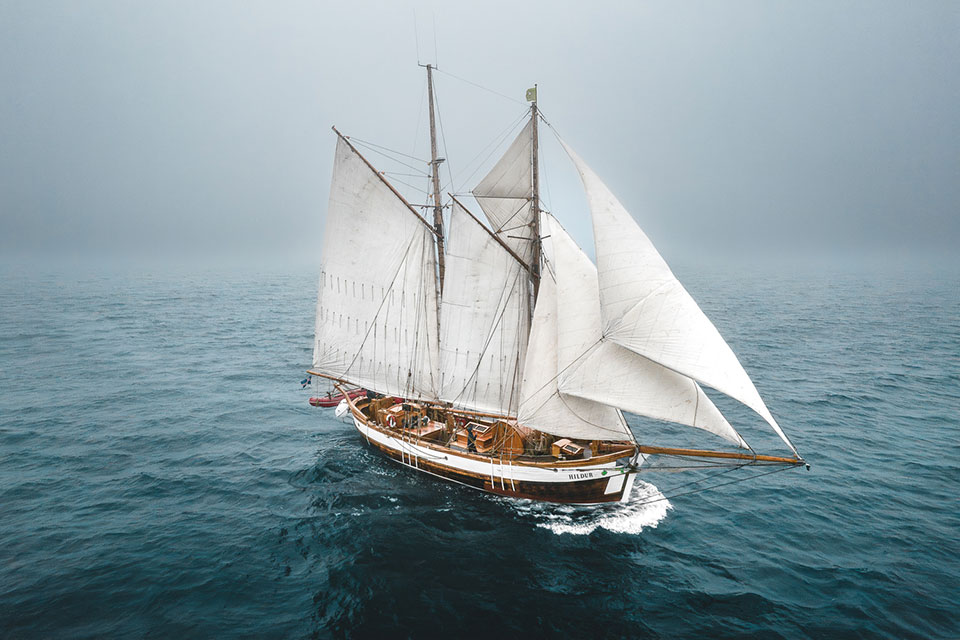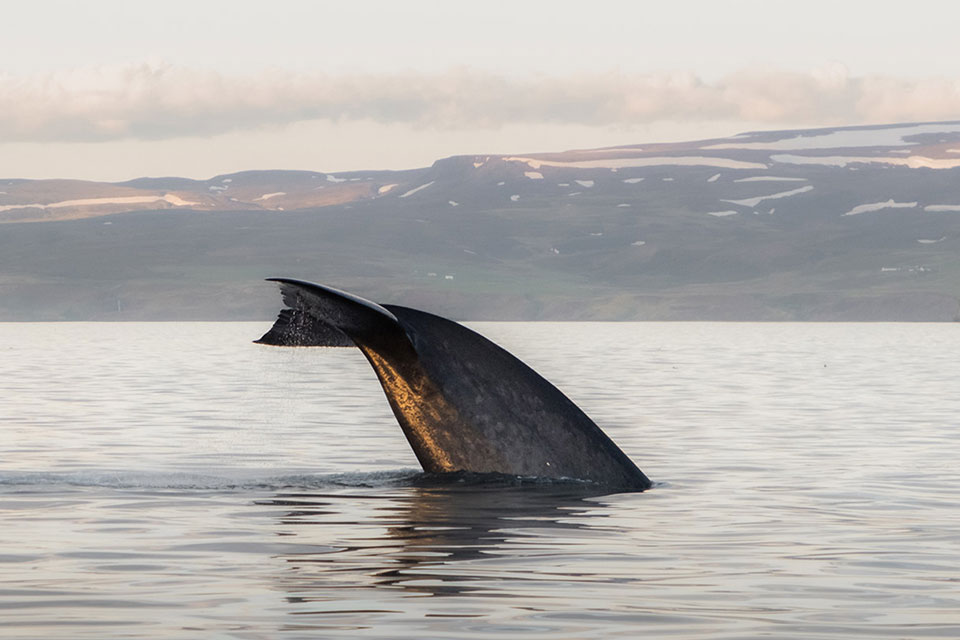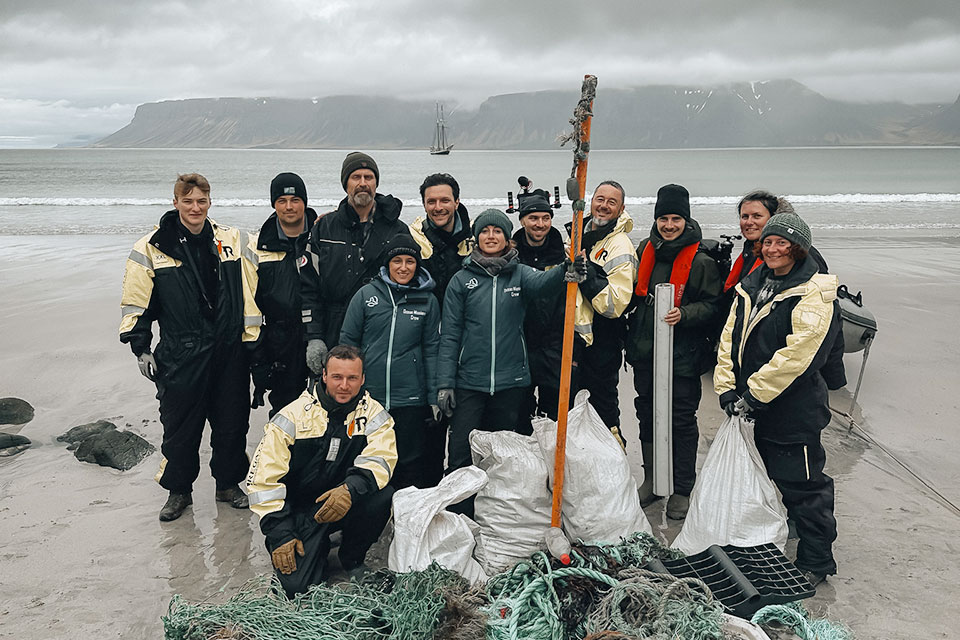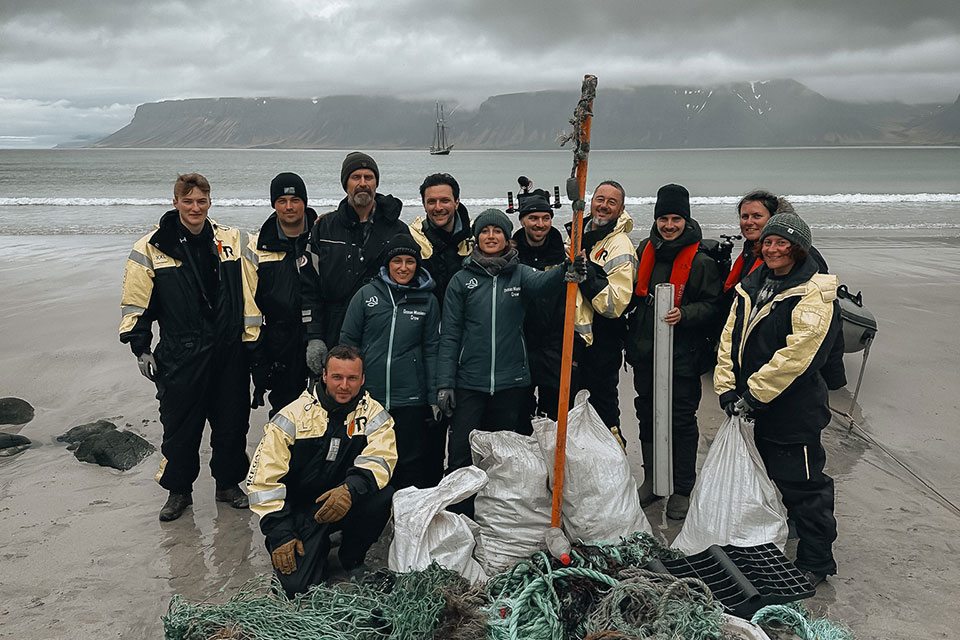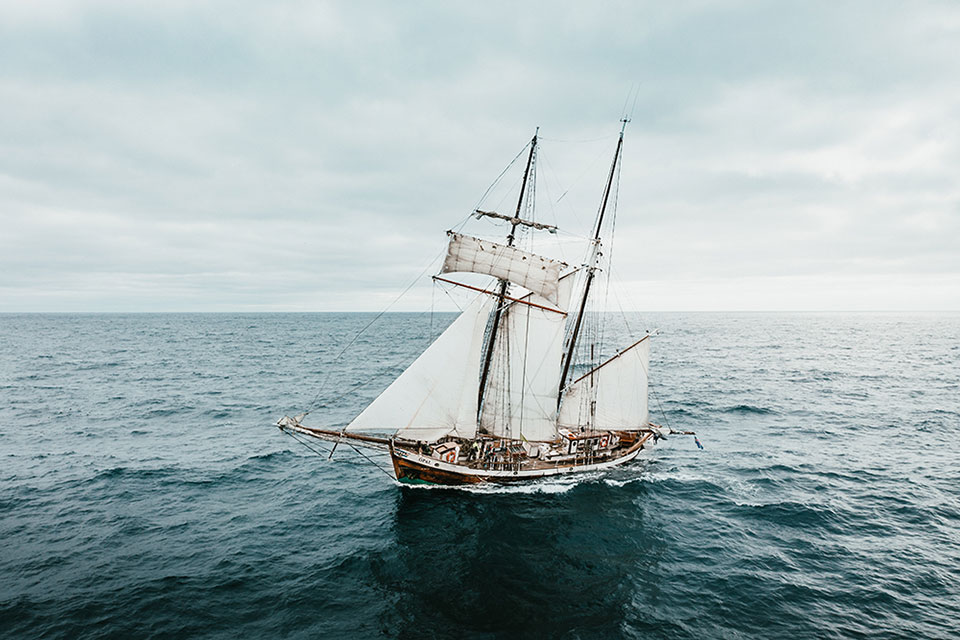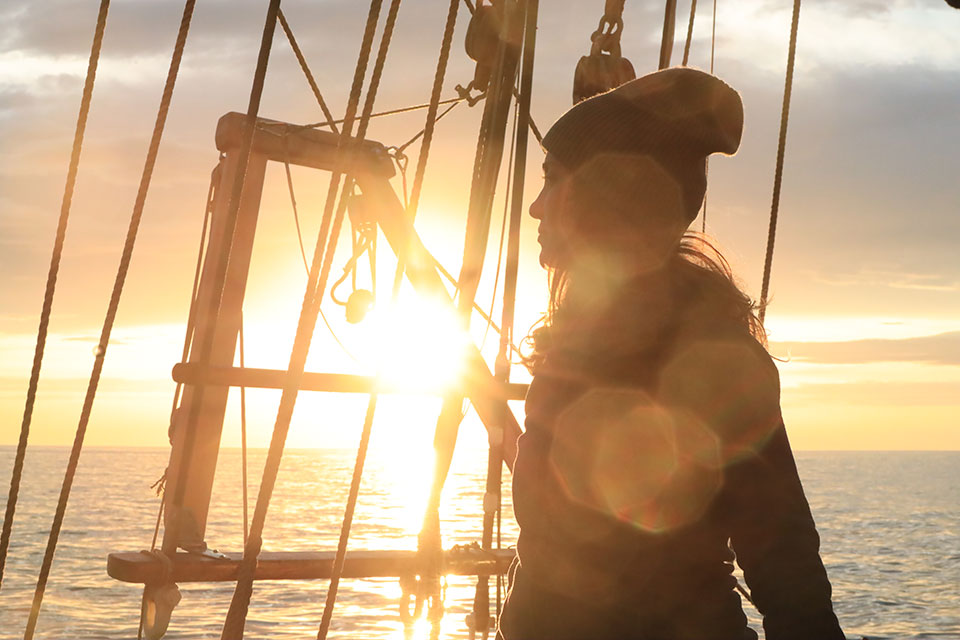This summer we were sailing in the stunning and remote fjords in Scoresbysund, East Greenland to study the problem of plastic pollution and to address the possibilities of developing some local projects with the small communities. Further, we did an experiment: to engage and involve the regular passengers onboard Opal in the matter and see their responses…
Do you want to know what we found?
Every summer, North Sailing runs exciting weekly expeditions with the Schooners (Opal Hildur and Donna Wood) in Scoresbysund, East Greenland. See more here.
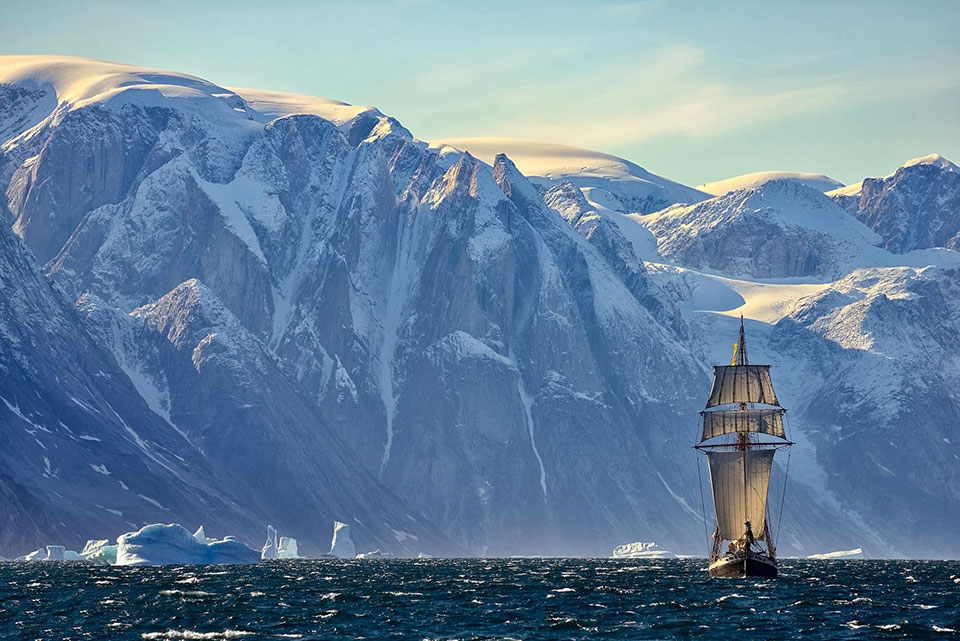
Scoresbysund is the largest and deepest multi-branched fjord system in the world. The diversity of landscapes and colors, the interesting history, the geological features, and its exotic wildlife (muskoxen, seals, narwhals, polar bears…) is something unique and special. The only inhabitant place is Ittoqqortoormiit, a small village near the airport with only 450 inhabitants. The nearest town from this point is actually in Iceland (not even in Greenland!)
As you can imagine, sailing among the fjords onboard an elegant old schooner is a breathtaking experience, especially for photography amateurs. This North Sailing experience is so demanded due to its spectacular scenery and “untouched nature” that some trips are even fully booked at least two years ahead. However it is so remote that you would rarely see other tourists or boat operators. This is the kind of scenario you would not expect to see any pollution.
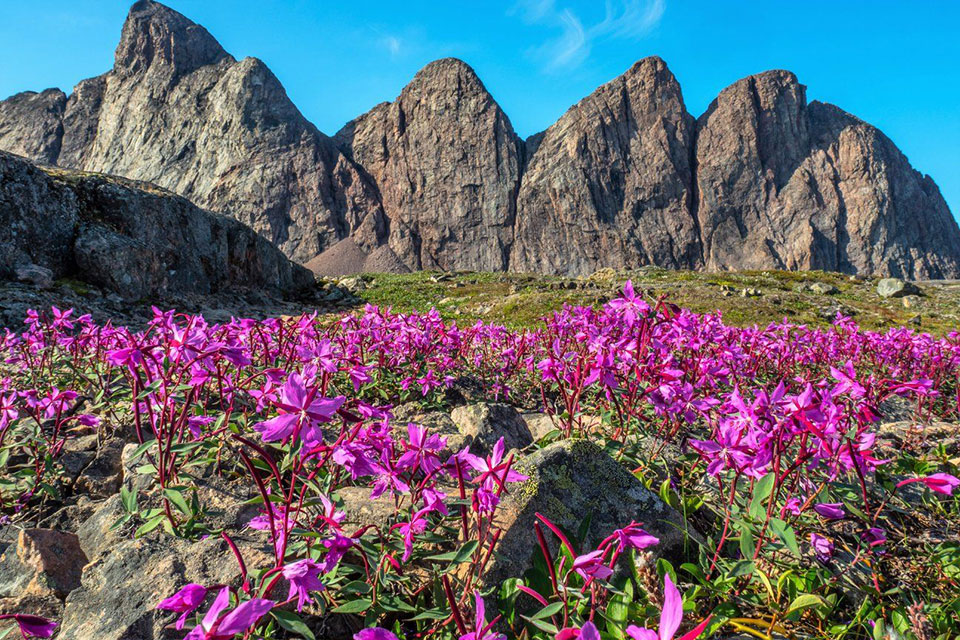
This summer, OM joined three of the expeditions, aiming to address the level of pollution in the area, have a conversation with the locals and study the interest of the passengers on the matter. Among conversations about the geology, the landscapes and the wildlife, we invited the passengers to participate on the manta trawl deployment onboard and we explained the problem of plastic pollution. They showed great interest and some of them were very happy to be the “assistants” when managing the nets and tools (even in the cold weather!). We believe that there were no micro plastics at least in the surveyed areas, although we could not make a complete scanning of the total area. With the help of the guests we managed to collect a lot of trash stranded in beaches, towns and land fields, mainly plastics and old cans & barrels.

Talking to the North Sailing pioneers on these expeditions, we could prove that the icebergs were sweeting and melting very fast and that glaciers were retrieving.
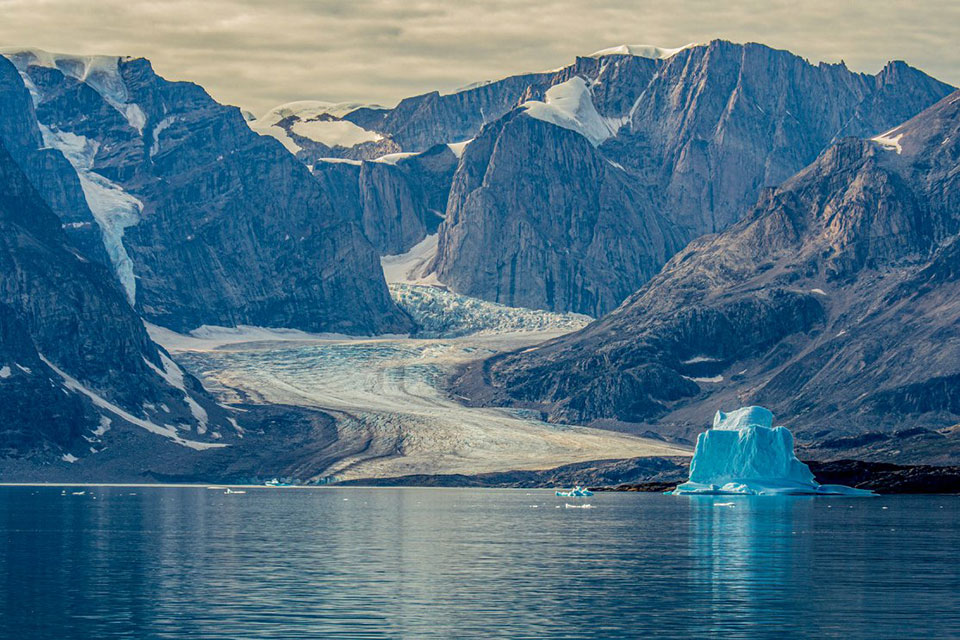
After this experience, we conclude that having a green component in the regular Greenland expeditions would increase even more the quality of these magnificent trips to the Artic regions!
Many things can be done here, especially working with small communities for a better waste management and to protect their unique nature and wildlife (and even themselves) from the pollution and climate change.
